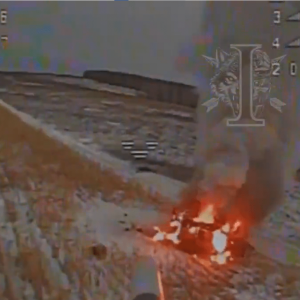
Today (September 19), the Lasker Foundation announced this year’s winners of the Lasker Awards. Zhijian “James” Chen, a biochemist at the University of Texas Southwestern Medical Center, was awarded the 2024 Albert Lasker Basic Medical Research Award for the discovery of the cGAS enzyme that spots DNA threats from foreign pathogens and self-DNA, caused by cellular stress or damage, in the cytosol. Like the first domino in a chain reaction, its activation sparks a cascade of events, triggering immune and inflammatory responses.
“I was really surprised to get the news,” said Chen. “[This award] is really very special.”
Chen’s discovery of cGAS, short for cyclic guanosine monophosphate-adenosine monophosphate synthase, in 2013 was a key part of filling in the gaps of knowledge in innate immune signaling. Unlocking the full potential of this molecule’s role in health and disease opens exciting possibilities in tackling infections, cancer, and autoimmune diseases.
Chen’s research delves deep into the complex cellular biochemistry of cell signaling and innate immune responses.
University of Texas Southwestern Medical Center
The Great DNA-Sensing Mystery
Over a century ago, Nobel laureate Ilya Mechnikov (later went by Élie Metchnikoff), who is considered the father of natural or innate immunity, noted that nucleic acids can stimulate immune responses.1 Yet, the exact mechanism of how the body detects cytosolic DNA to stimulate the innate immune system was an unsolved puzzle.
DNA is normally contained in the nucleus and mitochondria, so when it shows up where it doesn’t belong—like outside the cell or floating in the cytoplasm—the cell immediately sounds the alarm. Cells have built-in detectors called pattern recognition receptors that sense pathogen- and self-derived threats. Toll-like receptors are one line of defense along the cell surface and endosomes that can detect nucleic acids signaling potential danger.2 Once the alert goes out, the cell gets busy, cranking out proinflammatory cytokines, chemokines, and type I interferons (IFNs) to rally the troops and take down the pathogen.
But the cell is not a one-trick pony—it has a few more defenses up its sleeve. In the early 2000s, Chen became interested in type I IFNs induced by viruses. In 2005, Chen and his team discovered a novel protein called mitochondrial antiviral signaling (MAVS)—which recognized viral RNA—named in homage to its localization on the mitochondria and the Dallas Mavericks.3 It was one of the first mitochondrial proteins shown to have a direct role in innate immunity.4 Suppressing MAVS blocked IFN production, making cells vulnerable to viral replication and death. Overexpression, however, conferred antiviral immunity, shielding cells from damage.
In Mavs-knockout mice, Chen noted that cells were “totally defective in immune defense against RNA viruses.” But in response to DNA, it was largely normal. As they dissected the signaling cascade of the MAVS pathway, Chen’s interest naturally turned to how DNA induces a response as his findings suggested that there was another pathway.
Progress in identifying this elusive DNA sensor picked up in 2008 when immunologists Glen Barber from the University of Miami Miller School of Medicine and Hong-Bing Shu from Wuhan University independently identified an essential adaptor protein on the endoplasmic reticulum that is involved in DNA sensing.5 This protein, which Barber named stimulator of interferon genes (STING), mobilized cells to activate the transcription factors nuclear factor-kappa B (NF-κB) and interferon regulatory factor 3 (IRF3) to pump out type I IFNs like interferon beta (IFN-β).6 Cells missing the STING protein were highly vulnerable to viral infections. Just as MAVS acted as the adapter protein in the RNA pathway, Barber’s group reported STING as the adapter in the DNA pathway.7 However, despite STING’s importance, it does not directly sense DNA—there was a missing link.
Finding the Missing Piece of the Pathway
In his quest to find the elusive DNA sensor, Chen used an unbiased biochemical approach. He hypothesized that DNA binds to this sensor, which then directly or indirectly activates STING. So, he focused on the chain of events upstream of STING. He obliterated STING in a murine cell line and transfected the cells with different types of DNA. The team then collected the cytoplasm and applied it to a second set of cells, where they tracked IRF3 activation as a sign of STING activity. This method allowed Chen to trace the events leading to STING activation and zero in on the missing piece.
They used a series of chromatographic techniques to isolate and identify their target compound. Previously, the bacterial metabolites cyclic diguanylate (c-di-GMP) and cyclic diadenylate (c-di-AMP) were found to have the ability to activate mammalian STING receptors.8,9 However, Chen’s molecule did not match either metabolite; instead, it was something in-between. The team suspected they had discovered a novel second messenger. Upon further investigation, they found that the molecule was GMP and AMP joined together by two phosphodiester bonds: cyclic guanosine monophosphate–adenosine monophosphate (cGAMP), the first cyclic di-nucleotide in mammalian cells.10 “This pathway is highly conserved during evolution. It originates in bacteria and is very important for immune defense against bacteriophage infection. cGAS’s antiviral function has been conserved for billions of years from bacteria to humans,” remarked Chen.
Their findings demonstrated that cytoplasmic DNA, not RNA, set off a chain of events. cGAMP functioned as an endogenous second messenger to activate downstream signaling events that trigger antiviral immunity. However, Chen wanted to figure out the enzyme that made cGAMP.

Zhijian “James” Chen and his colleagues’ research revolves around cell signaling and host defense.
University of Texas Southwestern Medical Center
Through another series of biochemical fractionation and quantitative mass spectrometry, Chen narrowed his search to identify the enzyme cGAS.11 To Chen’s excitement, cGAS experiments produced similar results to MAVS; knockdown of cGAS inhibited IRF3 and IFN-β induction, while overexpression ramped up IRF3 and IFN-β production through STING. The level of IFN-β induction by cGAS was similar to that of MAVS when compared to other putative DNA sensors. Because cGAS was the only candidate that produced cGAMP activity, this finding solidified its place as the elusive cytosolic DNA sensor to complete the cGAS-cGAMP-STING pathway.
“It was quite a surprise that this sensor turned out to be an enzyme,” said Chen. “[However], it became very clear after we discovered cGAS [that] it was a very simple and clear mechanism of action.”
Together, his work established that DNA bound to cGAS directly, changed its conformation, and generated cGAMP to, in turn, prod STING to trigger type I IFN production and elicit an innate immune response.12 In particular, Chen was elated to find that DNA activated cGAS in a way that was independent of DNA sequence. “It allows this single sensor protein to detect a large variety of pathogens, as long as these pathogens contain DNA. This provides a powerful mechanism against many different pathogens, which cannot live without DNA, and they cannot mutate a DNA sequence to avoid the immune response.”
Unlocking the Power of cGAS
However, this powerful sensor can be a double-edged sword. While DNA is safely tucked away in the nucleus or mitochondria, some conditions result in self-DNA getting into the cytoplasm and inadvertently activating cGAS. Instead of protecting the body’s cells, this pathway has been linked to many different diseases: autoimmune diseases, like lupus and arthritis; inflammatory diseases, like myocarditis; and neurodegenerative diseases, like Parkinson’s disease and Alzheimer’s disease.13–15 “Our own DNA becomes the culprit of these diseases,” said Chen.
While aberrant expression of cGAS can wreak havoc on the body, Chen and others uncovered cGAS’s importance in immune defense against DNA viruses, bacteria, and even retroviruses like HIV.16 Plus, this small molecule is a very potent immune adjuvant for boosting antibody production in enhanced T cell activation.17 This suggests potential future applications in vaccine adjuvants or cancer immunotherapies. Consequently, researchers are focused on harnessing this innate defense by developing agonists and antagonists that target the cGAS-cGAMP-STING pathway.
Since its discovery a decade ago, Chen’s curiosity and relentless pursuit of answers have provided key insights into a century-old question: How does the body protect itself from external pathogens and its own internal threats? His contributions to the cGAS-cGAMP-STING pathway unveiled the intricate mechanisms in response to DNA detection, deepening researchers’ understanding of immune responses, and paving the way for advancements in treatments for autoimmune diseases, infections, and cancer. For Chen, there is still work to be done in dissecting this pathway and its regulatory mechanisms, but he is excited about what is to come.
- Metschnikoff E. Lecture on phagocytosis and immunity. Br Med J. 1891;1(1570):213-217.
- Kawai T, Akira S. The role of pattern-recognition receptors in innate immunity: Update on Toll-like receptors. Nat Immunol. 2010;11(5):373-384.
- Seth RB, et al. Identification and characterization of MAVS, a mitochondrial antiviral signaling protein that activates NF-?B and IRF3. Cell. 2005;122(5):669-682.
- Sun Q, et al. The specific and essential role of MAVS in antiviral innate immune responses. Immunity. 2006;24(5):633-642.
- Zhong B, et al. The adaptor protein MITA links virus-sensing receptors to IRF3 transcription factor activation. Immunity. 2008;29(4):538-550.
- Ishikawa H, Barber GN. STING is an endoplasmic reticulum adaptor that facilitates innate immune signalling. Nature. 2008;455(7213):674-678.
- Ishikawa H, et al. STING regulates intracellular DNA-mediated, type I interferon-dependent innate immunity. Nature. 2009;461:788-792.
- Burdette DL, et al. STING is a direct innate immune sensor of cyclic di-GMP. Nature. 2011;478(7370):515-518.
- Woodward JJ, et al. c-di-AMP secreted by intracellular Listeria monocytogenes activates a host type I interferon response. Science. 2010;328(5986):1703-1705.
- Wu J, et al. Cyclic GMP-AMP is an endogenous second messenger in innate immune signaling by cytosolic DNA. Science. 2013;339(6121):826-830.
- Sun L, et al. Cyclic GMP-AMP synthase is a cytosolic DNA sensor that activates the type I interferon pathway. Science. 2013;339(6121):786-791.
- Zhang X, et al. The cytosolic DNA sensor cGAS forms an oligomeric complex with DNA and undergoes switch-like conformational changes in the activation loop. Cell Rep. 2014;6(3):421-430.
- Gao D, et al. Activation of cyclic GMP-AMP synthase by self-DNA causes autoimmune diseases. Proc Natl Acad Sci USA. 2015;112(42):E5699-E5705.
- Decout A, et al. The cGAS-STING pathway as a therapeutic target in inflammatory diseases. Nat Rev Immunol. 2021;21(9):548-569.
- Gulen MF, et al. cGAS-STING drives ageing-related inflammation and neurodegeneration. Nature. 2023;620(7973):374-380.
- Gao D, et al. Cyclic GMP-AMP synthase is an innate immune sensor of HIV and other retroviruses. Science. 2013;341(6148):903-906.
- Li XD, et al. Pivotal roles of cGAS-cGAMP signaling in antiviral defense and immune adjuvant effects. Science. 2013;341(6152):1390-1394.






